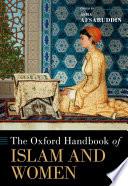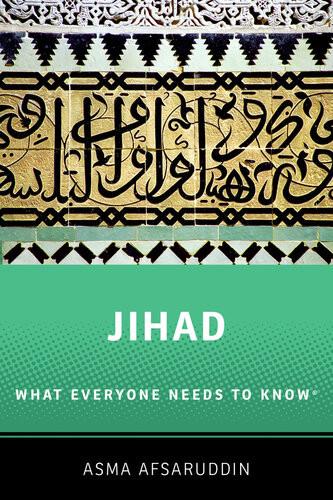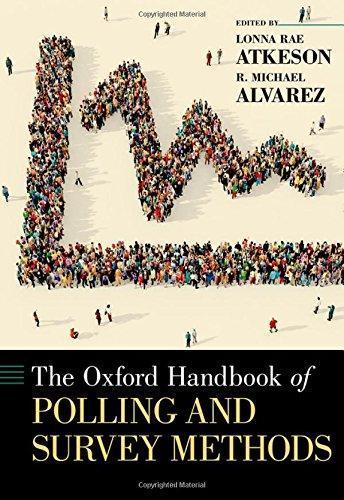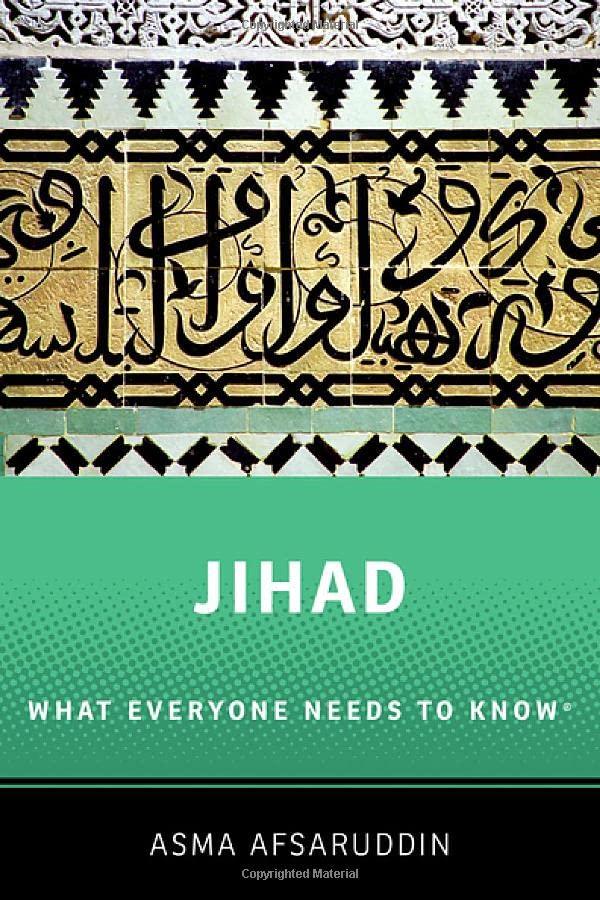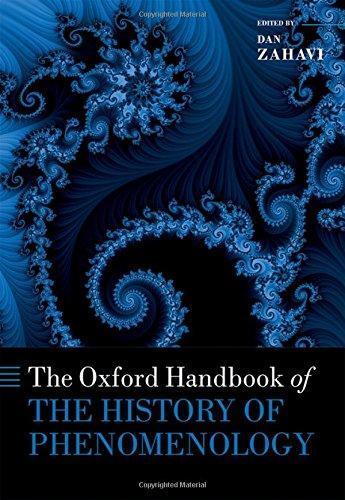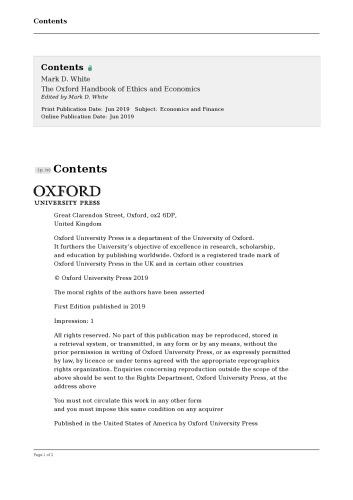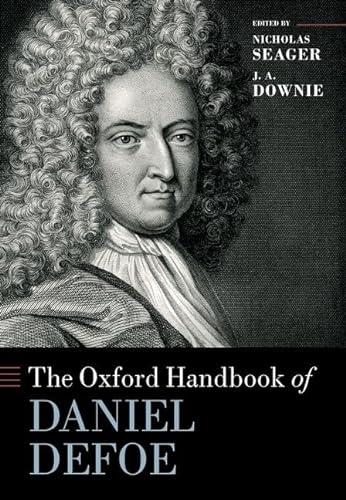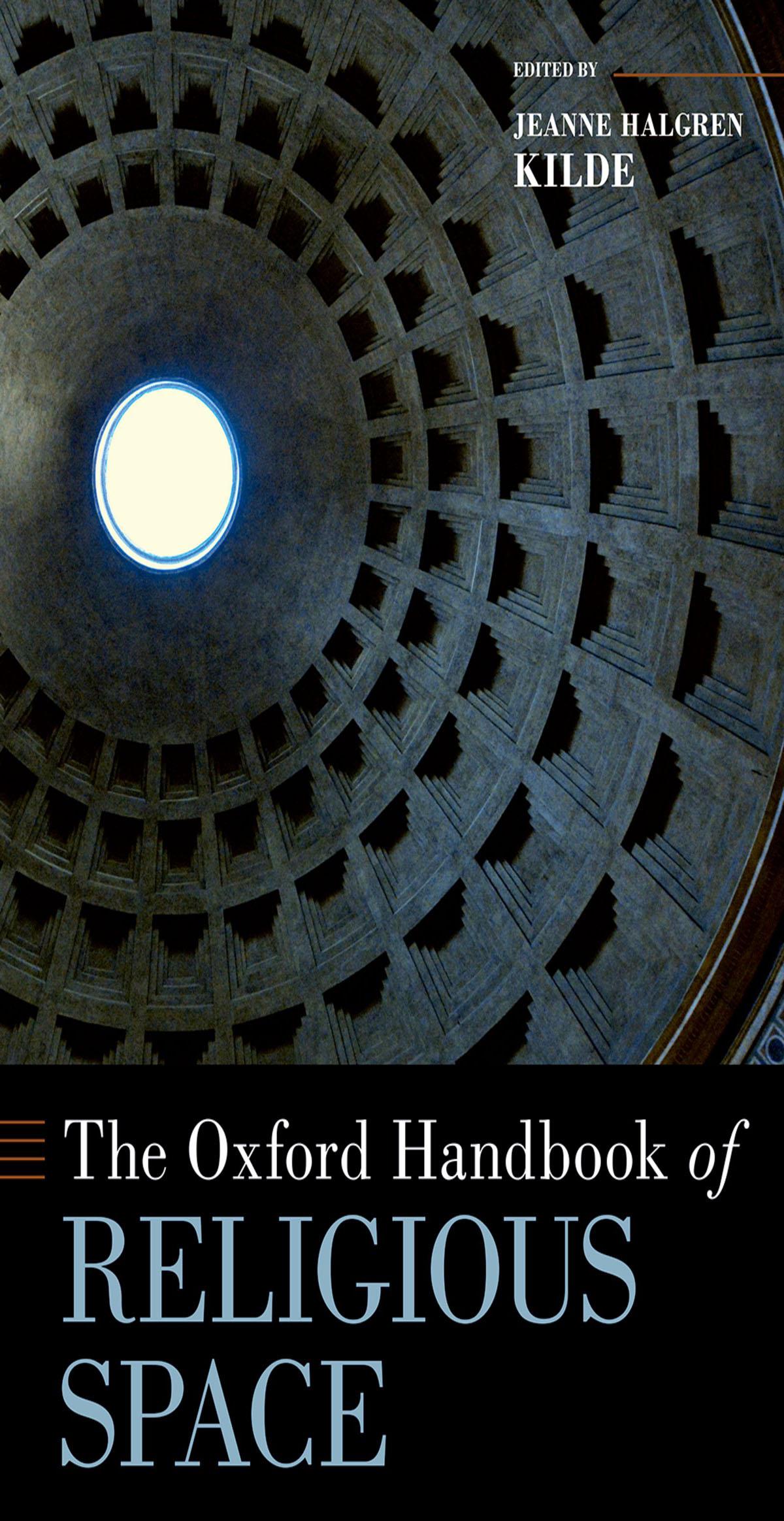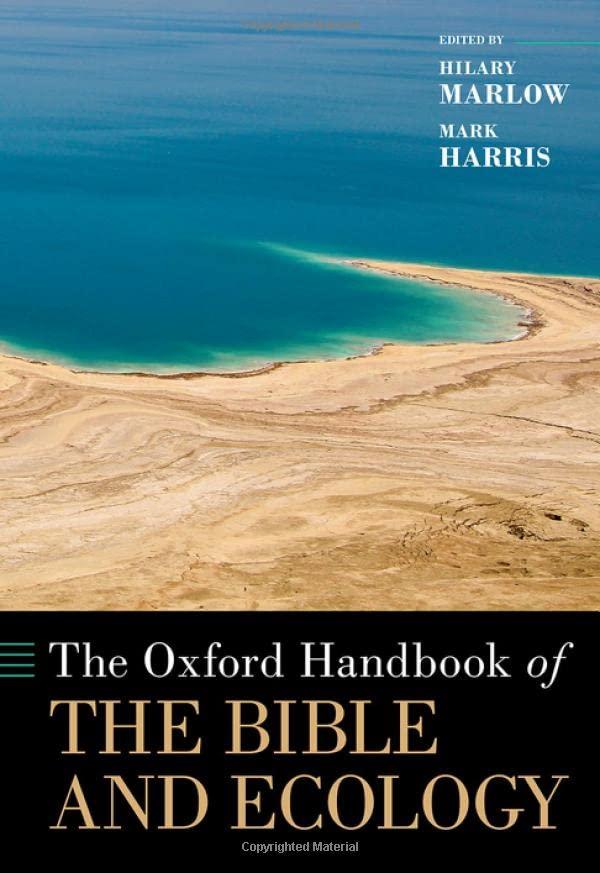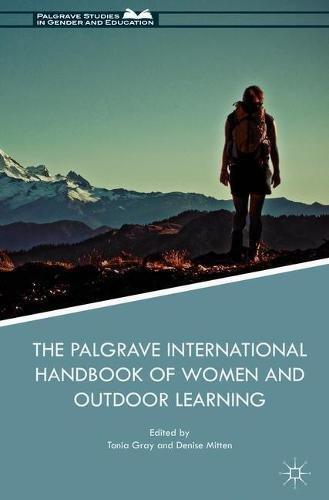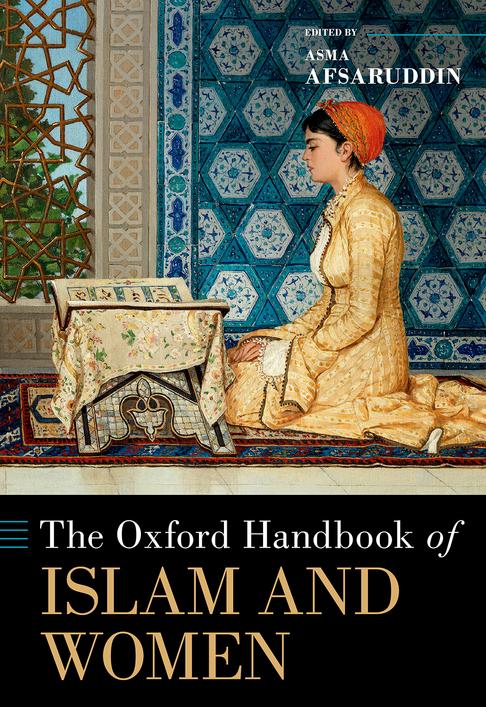Acknowledgments
This work owes its existence to Theodore Calderara, Editor-in-Chief of History and Religion, who approached me several years ago with the suggestion of editing a volume on the topic of “Islam and Women” for Oxford University Press’s renowned Handbook series. Although I could not assume the task right away, the suggestion planted in my mind shortly blossomed into a conviction that this was a project that I would dearly like to take on. My profound thanks, therefore, to Theodore for getting the ball rolling on editing this volume and for his patient and skillful shepherding of this project from start to finish.
I also recognize Paloma Escoveda, project editor at OUP, who efficiently took care of the logistical details related to the final production of the volume.
Thanks are also due to the College Arts and Humanities Institute (CAHI) at Indiana University which provided me with a grant to defray the expenses of index preparation.
And last but absolutely not least, I acknowledge my fellow collaborators on the Handbook and their learned contributions, without which it simply would not exist. The years between March 2020 and summer 2022 were particularly challenging as a global pandemic shut down universities and colleges, along with other institutions, altering the course of our lives in completely unexpected ways. Many of the contributors were delayed in submitting their final chapters because their institution’s libraries had closed down and essential services, like interlibrary loan, were not available. Some of them struggled to find childcare while business was supposed to go on as usual; some had to look after sick loved ones, and a few among them fell prey to COVID themselves. Many of us scrambled to revise syllabi on the fly and master the art of holding online classes and worse, hybrid classes, where we had to lecture in class and allow students to Zoom in as well! For those of us who were a bit technologically challenged at the beginning (as I certainly was), it was quite a learning curve.
But all rose superbly to the occasion and made the herculean effort to get us collectively to the finish line. After unavoidable delays, here we are. So a very robust shout-out to the contributors to this volume, who persevered through a very challenging period indeed with exemplary collegiality and patience.
Asma Afsaruddin Bloomington, Indiana
Contributors
Iman AbdoulKarim is a PhD candidate in the Departments of Religious Studies and African American Studies at Yale University.
Khaled Abou El Fadl is Distinguished Professor of Law and Omar and Azmeralda Alfi Chair in Islamic Law at the UCLA School of Law.
Hibba Abugideiri is Associate Professor of History in the Department of History at Villanova University.
Asma Afsaruddin is Class of 1950 Herman B Wells Endowed Professor and Professor of Middle Eastern Languages and Cultures at Indiana University, Bloomington.
Samer M. Ali is Associate Professor of Arabic Language and Literature in the Departments of Middle East Studies and Comparative Literature at the University of Michigan.
Nermin Allam is Associate Professor of Politics at Rutgers University, Newark.
Yasmin Amin is the Representative of the Orient-Institut Beirut (Max-Weber-Stiftung) in Cairo, Egypt.
Zahra Ayubi is Associate Professor of Islamic Studies in the Department of Religion at Dartmouth College.
Elizabeth Brownson is Associate Professor of History at the University of WisconsinParkside, Kenosha.
Katherine Bullock teaches Islamic Politics in the Department of Political Science at the University of Toronto, Mississauga.
miriam cooke is Braxton Craven Distinguished Professor Emerita of Arab Cultures in the Department of Asian and Middle Eastern Studies at Duke University.
Maria Dakake is Associate Professor of Religion at George Mason University.
Natana J. DeLong-Bas is Professor of the Practice in the Theology Department and Islamic Civilization and Societies Program at Boston College.
Seema Golestaneh is Assistant Professor in the Department of Near Eastern Studies at Cornell University.
Juliane Hammer is Professor of Religious Studies at the University of North Carolina, Chapel Hill.
Nina Hoel is Associate Professor in Religion & Society in the Faculty of Theology, University of Oslo, Norway and Visiting Researcher at the Centre for Contemporary Islam, Department for the Study of Religions, University of Cape Town, South Africa.
Maria Jaschok is a Senior Research Associate of the Contemporary China Studies Program in the Oxford School of Global & Area Studies and a Life Fellow of The Global China Academy, London.
Jeanette S. Jouili is Associate Professor in the Department of Religion at Syracuse University, Syracuse, New York.
Marion Katz is Professor of Middle Eastern and Islamic Studies at New York University.
Man Ke is Professor of Anthropology and Ethnology in the School of Ethnology and Sociology at Northwest Minzu University, Lanzhou, China.
Ruqayya Y. Khan is Malas Professor of Islamic Studies in the Department of Religion, School of Arts and Humanities, at Claremont Graduate University in Claremont, California.
Alainna Liloia completed her PhD in Middle Eastern & North African Studies at the University of Arizona in 2022, focusing on the role of Qatari women in nation-building and branding through the lens of transnational feminist theory.
Chiara Maritato is Post-Doctoral Research Fellow in the Department of Cultures, Politics and Society at the University of Turin, Italy.
Hadia Mubarak is Assistant Professor of Religion at Queens University of Charlotte.
Margaret Aziza Pappano is Associate Professor in the Department of English Language and Literature at Queen’s University, Canada.
Anna Piela is Visiting Scholar in the Department of Religious Studies at Northwestern University.
Feryal Salem is Associate Professor of Arabic and Islamic Studies at American Islamic College in Chicago.
Asma Sayeed is Associate Professor of Islamic Studies in the Department of Near Eastern Languages and Cultures at the University of California, Los Angeles.
Elora Shehabuddin is Professor of Gender & Women’s Studies and Global Studies at the University of California, Berkeley.
Mariam Sheibani is Assistant Professor of Islamic Studies in the Department of Near Eastern and Judaic Studies at Brandeis University.
Sohaira Siddiqui is Associate Professor of Theology at Georgetown University, Qatar.
Amira Sonbol is Professor of History at Georgetown University, Qatar and in the College of Arts and Sciences at Georgetown University, Washington, D.C.
Tamara Sonn is Hamad bin Khalifa al-Thani Professor Emerita in the History of Islam in the School of Foreign Service, Georgetown University.
Nelly van Doorn-Harder is Professor of Religious Studies at Wake Forest University, North Carolina.
A DECIPHERING MUSLIM WOMEN’S LIVES
Religion, Agency, and Diversity
ASMA AFSARUDDIN
“Islam and Women” is a very broad topic and as complex as the lives of women that it encompasses in a broad swath of the world. It is a topic that is of great interest to variegated audiences— to scholars of Islam and of Muslim societies, to academics and intellectuals concerned with the premodern and modern Middle East in general from different disciplinary backgrounds, legal specialists with a focus on human rights, and also to a large “lay” audience of public intellectuals, policymakers, “talking heads,” social justice and feminist activists, and opinionmakers of all sorts.
In recent times, the topic of Islam and women has become highly “ideologized” in many spheres, acquiring a certain political valency that inevitably casts a shadow as we approach this complex topic in the contemporary period. To engage and countervail this contemporary “ideologization” which sometimes threatens to derail level- headed conversations on the topic, it is important to adopt a historical, longue- durée approach that provides appropriate contextualization for a number of these contemporary debates. This is among the primary purposes of this Handbook .
In its wide-ranging coverage of issues subsumed under the umbrella topic of Islam and women, this volume is purposefully multidisciplinary. Its various chapters are authoritative contributions from well-known scholars from the humanities and the social sciences, and who are at the cutting-edge of scholarship on, inter alia, the topics of Qurʾānic hermeneutics; ḥadīth analysis; Islamic law, especially as it pertains to women’s legal and social rights; the scholarly and literary activities of Muslim women in the premodern Islamic world, and their activism and lived realities in contemporary Muslimmajority societies. These chapters delineate a broad spectrum of views on these key issues and the contestations of some of these views that are prevalent inside and outside of academia. They provide sophisticated and often innovative analysis of textual sources and of broad sociological and political trends within Muslim-majority societies. Many of these chapters emphasize above all the diversity present in Muslim women’s lives, both in the premodern and modern periods, and pay close attention to the historical and political contexts that shaped their lives and framed the thinking and actions of key figures throughout Islamic history. Such an approach results in fine-grained macro- and microstudies of Muslim women’s lives that problematize reified assumptions of gender and agency in the context of Muslim-majority societies, as is all too common.
Following this Introduction, the Handbook is divided into six sections: B. Foundational Texts and Their Interpretations; C. Women and Islamic Law; D. Deciphering Women’s Lives: Women in History and Texts; E. Women’s Lived Realities and Their Religious and Social Activism in the Modern Period; F. Modern Narratives of the Gendered Self: Women Writing about Women; and G. Islam, Women, and the Global Public Arena. Under each of these rubrics experts weigh in on diverse topics related to that particular theme, creating wide-ranging narratives that attempt to do justice to complex, sometimes interrelated, issues.
In the first section, the lead chapter is written by Hibba Abugideiri, who foregrounds “the question of woman” in the Qurʾān by focusing on three prominent female figures within it: Mary, the mother of Jesus; Bilqīs, the queen of Sheba (who is otherwise not named in the Qurʾān); and Zulaykha, the wife of ‘Azīz, the Egyptian pharaoh’s viceroy. In her study of these women, Abugideiri adopts the “tawhīdic approach,” which allows her “to interpret the Qur’ān as Divine Discourse that must, by its own logic, reflect God’s Self Disclosure, starting with tawḥīd (unicity).” This is an approach previously made famous by two distinguished gender scholars, amina wadud and Asma Barlas, who are regarded as pioneers in the field of modern Qur’ānic hermeneutics through a woman-centered, gender-egalitarian lens. Abugideiri puts this approach to great use in her chapter. Through this lens, she proceeds to offer us a penetrating analysis of the portrayals of these women that allows her to arrive at highly significant and original conclusions regarding the relation between the masculine and the feminine in the Qurʾān. Rather than being characterized by duality, which implies exclusion and separation, she finds that women and men in the Qurʾānic text are characterized by polarity, which implies interconnectedness, reciprocity, and complementarity.
The tawḥīdic approach, furthermore, allows Abugideiri to stress not just God’s transcendence but also his immanence so that one may thereby “authenticate female and
male subjectivities through God’s intimacy with humanity, women and men.” Applying this tawḥīdic paradigm allows her to discern that in the Qurʾānic text woman and man are ontological equals who synergistically point to the unicity of God and his larger purpose for humankind. The moral lessons we derive from the lives of Mary, Bilqīs, and Zulaykha parallel the lessons we extrapolate from the lives of Jesus, Solomon, and Joseph, the male figures to whom their lives are linked respectively, so much so that “their narratives can be deemed ‘un-gendered’ examples of undifferentiated spirituality.” The emphasis on polarity rather than duality ultimately helps us view woman and man in the Qur’ānic text as coeval agents in the staging of the human struggle on earth in all its various aspects, concludes Abugideiri.
Hadia Mubarak contributes the second chapter in this section, which focuses on influential commentaries written by some of the most prominent premodern male exegetes on key verses in the Qurʾān that are frequently cited in the context of women’s and gender issues. These verses are Qurʾān 4:1; 2:228; 4:34; and 4:128. Mubarak’s rigorous and nuanced analysis of a wide range of exegetical works allows her to exhume far from monolithic views recorded in these sources in the premodern period. Her survey of these influential commentaries leads her to conclude that works of tafsīr (exegesis) are characterized far more by polysemy and diverse approaches than is usually conceded in modern studies of this important genre. She remarks significantly, “this [hermeneutical] tradition is not a hermetically sealed box nor are its contents fixed,” and therefore it remains “amenable to a multiplicity of readings.” Her careful, in-depth analysis leads her to conclude that it is not always productive to read exegetical works along a sharp patriarchal-egalitarian divide; one is often able to discern on the part of the premodern male exegete a deep concern for the well-being of women, a notion that was inflected by the exigencies of their particular historical circumstances. It is, therefore, important to keep in mind, Mubarak reminds, that the sociocultural and intellectual milieu in which exegetes lived considerably impacted their hermeneutical maneuvers and interpretive proclivities, allowing us to question the normativity of their exegetical discourses and opening up space in the modern world today for alternative, “revisionist” interpretations that similarly foreground the welfare of women, especially from egalitarian and gender-just perspectives.
After the Qurʾān, the ḥadīth statements attributed to the Prophet Muḥammad—is the most important source for recreating the lives and roles of the first generation of Muslim women, the celebrated Ṣaḥabiyyāt or women Companions of the Prophet. In chapter 3, Feryal Salem insightfully discusses a number of significant ḥadīth that have been and continue to be frequently cited to establish mimetic precedents for subsequent generations of Muslim women. A number of these ḥadīth also serve as “causes/ occasions of revelation” for key Qurʾānic verses and therefore provide important contextualization for understanding their larger moral and normative implications. Salem makes the significant observation that when women scholars engage these prophetic reports they often extrapolate levels of meanings that were occluded from their male counterparts. Life experiences, especially as shaped by gender, and the sociopolitical milieux of those who explicated ḥadīth in the premodern period heavily influenced their
perspectives—pointing to how our own radically altered circumstances in the twentyfirst century can shape our readings of the ḥadīth corpus and allow us to variously endorse or question the lessons that our male predecessors derived from it. Furthermore, she points out, a holistic engagement with the ḥadīth corpus, along with the Qurʾān, allows Muslims to critically engage a number of reports with misogynistic content and assess their reliability as well as their credibility.
It is to modern readings of sacred, foundational texts that we turn next. In my own chapter that focuses on woman-centered and feminist exegeses of the Qurʾān in the contemporary period, these divergences in reading strategies that ultimately lead to dramatically different interpretations of key verses become clearly apparent. The chapter outlines the pioneering efforts of early Muslim women exegetes of the twentieth century to read the Qurʾānic text on its own terms rather than engage it through the prism of the rich commentarial tradition generated by learned male scholars through the generations. The results in some cases have been downright revolutionary. These gender scholars—some of whom self-consciously identify as “feminist” while others do not— have very cogently questioned some of the interpretive strategies of premodern Qurʾān commentators and the highly gendered, hierarchical understandings to which they often led. Through their own careful, cross-referential reading of the Qurʾānic text and exploration of the semantic layers of key terms, such as qānitāt/qānitūn, nushūz, daraja, and faḍTl, modern women exegetes are able to mount a trenchant critique of androcentric construals of the Qurʾān that continue to impact the lives of Muslim women to this day. In the chapter, I also discuss some recent critiques of their position by a small coterie of gender scholars and assess their validity.
In chapter 5, Khaled Abou El Fadl focuses on modern rereadings of the ḥadīth literature and the sunna of the Prophet, which refer to his sayings and practices respectively, as recorded by his closest Companions and transmitted by succeeding generations of Muslims. As the author points out, the ḥadīth corpus documents certain events in the earliest history of Islam that have been interpreted as empowering and liberating for Muslim women. At the same time, he notes, a number of the reports recorded in this corpus can also be understood to advocate patriarchal values and structures that sanction male dominance over women. The chapter begins by exploring what Abou El Fadl terms “tension reports” “that are alleged historical memories of the exercise of women’s agency in a fashion that challenged or defied the institutions of patriarchy at the time of the Prophet or his companions.” The tension arises when these reports are contraposed to what Abou El Fadl describes as “misogynistic reports” that uphold patriarchal institutions and mores. Their content has been critically analyzed and challenged by several Muslim women scholars in the modern period.
The bulk of the chapter is then taken up by a rich and thoughtful account of the three main interpretive or thematic stratagems that have been employed by Muslim women scholars, who write in English, in their engagement with the ḥadīth literature and the interpretation of various reports in the modern world. Abou El Fadl concludes that although patriarchy is a trial (ibtilā’) and the content of certain reports remain problematic to this day, one cannot advocate the wholesale jettisoning of the ḥadīth corpus,
as some have proposed. Rather, he says, a more circumspect and credible approach is to continue to regard the ḥadīth and sunna as “critical components of the Islamic tradition,” and to recognize that “this tradition must continue to serve as the source for dynamic and inventive solutions, even to deeply entrenched challenges such as patriarchy.”
In the next section, “Women and Islamic Law,” Mariam Sheibani provides a broad overview of how classical jurists (from the second/eighth to twelfth/eighteenth century) conceived of the rights and duties of Muslim women, particularly in regard to marriage, divorce, and inheritance rights, and especially within the four Sunnī madhāhib, with occasional comparisons with Shi’i legal positions, particularly within the Imāmī or Ja‘farī school. The chapter also explores the reasoning behind these legal pronouncements, the sources that the jurists drew from, and the assumptions they made about women’s agency and sexuality that informed such legal positions. The strength of the chapter lies in its skillful highlighting, wherever relevant, of the diversity of views among the classical jurists themselves on these key issues of marriage, divorce, and inheritance. Sheibani stresses that there was always a complex and contested relationship between the formal articulation of rights and obligations in legal manuals and moral and religious duties that were not enforceable by the courts. In reality, therefore, legal rulings pertaining to women’s rights and obligations were always subjected to accommodation of realities on the ground and the negotiation of diverse local customs and social practices which allowed for various inflections of legal norms to emerge in specific settings. Specific case studies provided in this chapter helpfully illustrate this highly significant point which allow us to question monochromatic representations of Islamic law and its application throughout history.
In her meticulously researched chapter, Sohaira Siddiqui points out how Islamic family law (IFL; al-aḥwāl al-shakhṢiyya) in the modern period is often used as a litmus test for both modernization and Islamization. Starting in the period of European colonial occupation, a general awareness that IFL was in need of reform took shape, especially as women’s status and roles began to be reconceptualized in Organization of Islamic Conference (OIC) countries. The ideological tug-of-war that ensued created a series of dichotomies—traditional versus modern, religious versus secular, state versus civil society, and tradition versus reform—that continue to “frame legal and policy debates on Islamic family law.” Siddiqui provides a rich historical backdrop to the phases of codification of IFL that took place in a number of Muslim-majority countries, starting in 1917, when the Ottoman Law of Family Rights was passed. The variable factors that determined the process of legislative reform were constituted by “the colonial legacy, state politics, the relationship between the state and religion, and the dominant political actors on the scene.” Siddiqui provides a sweeping overview of these historical developments and assesses the efficacy of the historical-legal, anthropological, sociological, and political approaches adopted by scholars to study IFL. Some of the challenges inherent in effecting legislative reforms, especially in regard to the promotion of gender equality, are brought into sharp relief in Siddiqui’s discussion of Malaysia and Morocco as case studies.
In chapter 8, Natana J. Delong-Bas traces the history and content of modern scholars’ engagement with classical Islamic law, adroitly guiding us through debates about its origins and development through time in order to trace “how normative roles of women and their accompanying rights and duties came about.” In her valuable review of relevant literature, she contextualizes a number of these debates and critically interrogates the terms “women,” “rights and duties,” and “classical legal literature,” pointing to the imprecise nature of such terminologies and the plural ways they can be understood. Issues of methodology also are paramount and leads her to ask, “To what degree do the theoretical descriptions match actual legal practice and how best to understand differences between the two?” Delong-Bas advocates that both qualitative and quantitative approaches to the classical legal literature be adopted. This would lead to a more holistic approach to the study of classical Islamic law and “help to reassert the mutuality that is supposed to be at the heart of the husband–wife relationship, rather than the unidirectionality implied in a hierarchical relationship of obedience.” At the same time, she warns, reformers should not downplay the real problems inherent in highly patriarchal formulations of classical legal precepts concerning women and the family that have led to pronounced gender inequalities in Muslim-majority societies.
The next section is titled “Deciphering Women’s Lives: Women in History and Texts.” In this section, Yasmin Amin in chapter 9 focuses on biographical and prosopographical literature that records entries on the ten women Companions promised paradise by Muḥammad on account of their moral excellences and exceptional accomplishments, on a par with the ten male Companions who were similarly assured of paradise. Over time, it is the names of these male Companions that have been given prominence and that have predominated in the literature written about the first generation of Muslims, so much so that most Muslims would be hard put to name these illustrious female Companions. Through her foray into this rich literary genre, Amin retrieves the names of these women and dwells on their individual accomplishments that brought them this kind of prophetic recognition during their own lifetimes. At the same time, she ponders what social-political-historical factors contributed to the eclipse of their names and of the memory of their distinguished status when the opposite trend is clearly discernible in regard to their male counterparts. Modern, especially women, scholars, are beginning to reverse this trend by exhuming the details of the lives of these prominent women Companions and assessing the different ways in which the significance of such details has been interpreted and reinterpreted by male biographers. After her careful, diachronic examination of these various sources, Amin concludes that “such reinterpretations and re-assessments have been used to justify a great variety of cultural attitudes toward women and gendered norms of behavior,” a process that, in fact, continues to our very day.
Maria Dakake’s chapter nicely complements that of Amin by focusing more narrowly on two prominent women from the first century of Islam. They are Fāṭima, Muḥammad’s daughter, one of the women promised Paradise and greatly revered by both the Sunnīs and Shī’a; and Zaynab, the female protagonist of the battle of Karbalā’ fought in 61/ 680 between an Umayyad army and al-Ḥusayn, the beloved grandson of the Prophet.
Both Fāṭima’s and Zaynab’s lives are assessed through pro-‘Alid and pro-Shī‘ī eyes, allowing for the tragic suffering and heroic forbearance of these two iconic women to be foregrounded above all other attributes. Dakake’s thoughtful reading of their lives as depicted in Shī‘ī sources brings into sharp relief the different yet complementary ways in which these women are valorized: Fāṭima, the long-suffering daughter of Muḥammad and mother of his famous grandsons, al-Ḥasan and al-Ḥusayn, often regarded as passive; and Zaynab, the stalwart and activist heroine who goads the menfolk into battle, single-handedly saves the life of the future Shī‘ī Imām, and fearlessly speaks truth to corrupt power as represented by the Umayyad caliph Yazīd ibn Mu‘āwiya (d. 64/683). Yet, as Dakake, points out, they share a number of similar attributes. Through a judicious sifting of the relevant sources, Fāṭima is clearly revealed to also be a fearless critic of injustice and unflinching in her championship of the rights of the ahl al-bayt, the family of the Prophet. Ultimately, Dakake observes, “as models of devotion, obedience, courage, and conviction, they serve as virtuous examples, not only for Shīʿī women, but for all Shīʿīs, regardless of gender.”
In chapter 11, Asma Sayeed focuses on the roles played by Muslim women in the transmission of knowledge, particularly of ḥadīth, since the first century of Islam. She traces the ebb and flow in women’s participation in ḥadīth transmission, linking them to specific historical factors that impacted such trends and provides a useful review of the scholarly literature on the topic to date. Modern scholarly interest in this topic has only grown in recent times, since, as Sayeed reminds us, “women’s religious learning is indelibly bound up with questions of their agency, authority, and empowerment.”
Although the focus has typically been on Sunnī women scholars, the terrain has recently begun to change with more studies now emerging that discuss the contributions of learned Shīʿī women from the Imāmī branch; however, similar studies of female education within the Zaydī and Ismā‘īlī traditions are currently lacking. Sayeed concludes her chapter by reflecting on the future of scholarship focused on women’s transmission of learning and the directions it might assume. She suggests that “stronger interdisciplinary, transregional, and historical connections” be forged among scholars to do full justice to this promising field of inquiry and that there be a conscious attempt to connect modern Muslim women’s scholarship to that of the past.
In chapter 12, which discusses how Muslim women’s devotional lives tend to be portrayed in scholarly studies, Zahra Ayubi and Iman Abdoulkarim observe that two principal paradigms tend to be invoked: one posits women’s practices as alternatives to those of men while the other focuses on the historical and contemporary recovery of women’s religious learning and authority. Ayubi and Abdoulkarim proceed to interrogate both these paradigms and uncover the assumptions and tensions inherent in each of them. A perennial tension apparent in both paradigms is between hierarchical and egalitarian conceptions of gendered relations and norms in Muslim-majority societies that continue to spark debate into the contemporary period. This tension becomes evident in certain types of literature that focus on issues of women’s empowerment, especially through the pursuit of devotional activities and the acquisition of religious knowledge, that are sometimes subversive of men’s traditional authority and sometimes not.
In his highly illuminating and provocative chapter, Samer Ali resurrects the contributions of Arab and Muslim women to Islamic literary production in the premodern period, generously documented in collections of poetry (dīwān); verse segments (qiṭ‘as), orations (khuṭabs), and stories (akhbār) that he analyzes. The seminal contributions of these gifted women are, however, hardly known in the West and have been obscured by Orientalist authors who approached the Islamic East through the prism of European imperialism. Such an “approach sidelined evidence of phenomena that defied preconceived categories and constrained a rigorous understanding of women’s roles as littérateurs and agents in society,” says Ali. Using the broad category of “speech” and the umbrella category of “women’s rhetoric,” Ali is able to cogently establish centuries of women’s literary imprint on genres, such as poetry, verse fragments, oration, and stories. Women’s prominence in literature should not be considered surprising, he says; women were valorized in pre-Islamic poetry, for example, as the beloved subject of the male poet and women played robust, public roles during the early, formative period of Islam, both during and after the time of the Prophet. Subsequent generations of women, he says, “implicitly benefited from the legacy of autochthonous feminist counter-culture, and the record of these women’s deeds in sources attests to the interests, even admiration, of later generations, including men.” Through cultural and literary productions of various kinds and their mastery of rhetoric, women from different levels of society established their agency that contributed to their sense of dignity, Ali notes, and even allowed them to assume positions of cultural leadership, sometimes through the medium of the literary salon.
In chapter 14, Amira Sonbol focuses on the topic of Muslim women’s participation in the economies of their communities in the premodern period and unearths a wealth, so to speak, of information regarding their contributions from primary sources. The sources that she relied on for this research are multiple and varied: records of financial transactions concerning trade, mortgage, and litigation of various kinds; documents of financial settlements during marriage and divorce; inheritance records; and records of charitable endowments and trusts (awqāf) established by women. Sonbol’s survey of these documents reveals that some women were economically very engaged and made critical contributions to their local economies that were recognized as important and essential in their own time. Their economic productivity enjoyed legitimacy because women along with men are given the right to own property under Islamic law and “neither was forbidden from being financially active, investing, holding or spending wealth inherited or earned.” In the life of the community, Sonbol describes the socioeconomic relationship between male and female as “rhizomatic,” that is to say, “interconnected” horizontally characterized by communality and mutual dependence. By citing real cases drawn from these myriad documents, she brings to life the impressive range of economic activities Muslim women engaged in, continuing a tradition that extends back to the early formative period of Islam and to the pre-Islamic period. Based on her valuable study, Sonbol observes that the “diversity of financial transactions that women were involved in, as registered in premodern courts, shows how integral women were to the economies
of their communities and families,” and notes that such economic participation was even considered normative.
The following section is titled “Women’s Lived Realities and Their Religious and Social Activism in the Modern Period,” In chapter 15, Marion Katz provides a notable intervention in academic debates about how to assess the significance of women’s increased mosque participation in the modern period in terms of agency and access to “public” space. Saba Mahmood’s highly influential work Politics of Piety: The Islamic Revival and the Feminist Subject, published in 2005, in many ways set the terms for these academic conversations. To a large extent, these conversations have been shaped by Mahmood’s analysis of women’s mosque movements as largely counterhegemonic, especially in their efforts to expand women’s religious authority, despite the conservative gender ideology to which many of these women subscribe. This leads Katz to fruitfully interrogate the “public–private dichotomy” and the traditional framing of the mosque as “public space.” Her research leads her to conclude that “women’s use of mosque space has not historically conformed to the model of “public” religious activity” and “that women’s religious activities inside and outside of the mosque do not fit a simple public/ private dichotomy.” This observation leads to further reflection on how the mosque in the contemporary period is increasingly becoming a site for debates about citizenship and reconceptualized as an arm of the state, all of which affect women’s access to the mosque in different sociopolitical contexts.
Chapter 16 focuses on motherhood and mothering in modern Muslim-majority societies. As the author Margaret Aziza Pappano observes, these terms refer to a constellation of “multiple meanings, social formations, and diversity of practices” that has global and transhistorical resonance. While motherhood is ostensibly revered in practically every society, its importance is more often than not obscured within patriarchal institutions and cultural mores, she says. Pappano notes that although the Qurʾān and the ḥadīth exalt the status of mothers above that of fathers without implying that childbearing was the primary function of women, Islamic patriarchal societies, as they evolved since the seventh century of the common era, came to depict motherhood as essential to a woman’s identity and position in society. This tendency appears to have intensified in the modern period. Pappano surveys certain modern Muslim-majority countries and notes that women in such societies are often marginalized and stigmatized if they do not bear children. A complicating factor that arose in the modern period was that motherhood and “motherwork” became implicated in issues of nationalism and mobilized as a tactic of resistance to European colonialism in the nineteenth and twentieth centuries. In the more recent period, the role of Muslim mothers has become the object of sharp scrutiny in the context of the rise of religiopolitical radicalism in many Muslim-majority societies and in the so-called War on Terror launched by Western governments.
In her highly informative study of Muslim women heads-of-state in chapter 17, Tamara Sonn identifies several such rulers, who, varyingly, cite their religious background and/ or commitments as a source of political empowerment. They include Qudsia or Gohar Begum, Sikander, Shah Jahan, Sultan Jahan Begum, all of Bhopal, India; Benazir Bhutto of Pakistan; Khaleda Zia and Sheikh Hasina of Bangladesh, Megawati Sukarnoputri of
Indonesia; Tansu Çiller of Turkey; and Sibel Siber of the Republic of Northern Cyprus. Sonn discusses how these influential women leaders, when acceding to power, made concerted efforts in their different milieux to improve the situation of women in general. With the exception of Çiller, they referred to Islam as empowering them to work for social and political justice, and especially in the postcolonial period, to work to establish democracy in their respective societies. Bhutto is notable in having left behind publications in which she strongly asserts the congruence between foundational Islamic principles and the establishment of democratic, civil societies that guarantee the rights of women and of all citizens equally. Sonn concludes by observing that the women heads-of-state she focused on, in general, did not regard their positions as anomalous; rather they considered themselves as continuing the legacy of exercising multiple roles of leadership as evident in the lives of the first generation of prominent Muslim women.
In the next chapter, Elizabeth Brownson provides a masterly survey of how women in Palestine, Lebanon, and Syria derive empowerment and agency from their religious and social activism in these specific milieux. She reminds us that social, economic, historical, and political factors specific to a particular context must always be taken into consideration when conducting a survey of this sort. This allows her to reveal the complexities inherent in the lives of the women she studied in these three different locales and the ways in which they do not map neatly onto preconceived notions of empowerment and agency. For example, the Hamas women leaders Brownson studied in Palestine proved to be quite effective in parlaying their political appointments into opportunities for seeking better access to education and employment for all women, often using religious arguments to make their case. Their situation, Brownson argues, challenges the assumptions of some enthocentric Western observers that women who wear the hijab and practice gender segregation are automatically to be regarded as disenfranchised. Careful attention to facts on the ground and nuances in details also allows Brownson to revisit an assumed ready tension between Islamist and secular women activists. Her research brings to light instead some common ground between these two groups on key issues like work, education, and political participation, although different conceptualizations of human rights continue to be a source of disagreement.
In chapter 19, Nermin Allam provides an account of women’s religious and social activism in Egypt and, more broadly, North Africa, and makes the critical point that the range of women’s activism in this region challenges an assumed bifurcation between the secular and religious realms, on the one hand, and between the social and political, on the other. This is to be expected, she affirms, since these women are from different socioeconomic backgrounds and have differential access to key resources and positions of power. Moreover, whether such activism is fueled by Islamic volunteerism or not, women’s public engagement challenges preconceived notions of agency and selfempowerment current in the West. Despite such complexities inherent in their lived realities, Allam is nevertheless able to identify some common themes and patterns that marked women’s social and religious activism, including the rise of a Qur’ān-based Islamic feminism, and shaped its trajectory specifically in Egypt, reflecting broader trends in North Africa. These themes include the framing of women’s social and
religious activities, particularly in the early period; the frequent overlap in the intellectual roots of secular and Islamic discourses; and a tendency toward what Islah Jad has termed “NGO-ization:” that is to say, the tendency to form nongovernmental organizations, whose track record over the years has at best been mixed.
Seema Golestaneh’s chapter on women’s activism in Iran since the nineteenth century provides a vivid and detailed description of the different trajectories these modes of activism have assumed over the years in changing sociopolitical circumstances. She surveys the intellectual histories and ethnographies of Iranian women’s religious and political engagements and rehearses some of the key debates in the field regarding the origins and nature of such engagements. In the course of her extensive literature review, she delves into writings generated by women activists themselves, retrieved from influential periodicals, such as Zanān and others, and surveys as well the secondary literature that studies such activism. The policing of women’s apparel, as apparent in the various unveiling/veiling measures adopted under different governments, is explored to reveal how women learn to navigate these sartorial restrictions. Golestan further questions the efficacy of “unfortunate binaries, pitting ‘feminist’ against ‘Islamic fundamentalism’ or ‘Islamists’ against ‘secularists,’ ” noting that the scholarly trend now is “to document the ways in which women, of varying personal pieties, have used religious discourses in order to influence legislation and issues they view as favorable to women.” As a result, religious and secular feminists have formed alliances to promote cooperation on shared concerns and more effectively campaign for legislative reform, leading to what some have called “the secularization of Islam.”
In chapter 21, Chiara Maritato explores the changes that have occurred in the last three decades in women’s movements in Turkey, a key site for women’s activism in the MENA region. Her study is based on ethnographic research that she conducted there between 2013 and 2019, which focused on the Islamist women who were employed as religious officers by the Presidency of Religious Affairs (Diyanet) after the repeal of the headscarf ban by the AKP government. Maritato adopts a perspective “that considers women’s religious activism beyond the feminism–antifeminism dichotomy,” making it possible to shed light on different forms of women’s agency. She discovered that while most of the women employed by the Diyanet had been politically and religiously active against previous governments, their activism became attenuated after attaining their Diyanet positions, and they largely became transformed into compliant bureaucrats under the AKP. More critical voices emanating from Muslim and secular feminists have become marginalized since 2010 and has contributed to a more “religious-conservative gender climate,” in which the historic cooperation between these two groups has become diluted.
Elora Shehabuddin’s chapter highlights the religious activism of women in Pakistan and Bangladesh, two populous Muslim-majority countries in South Asia. Shehabuddin focuses on their membership in two important Islamic pietist organizations—the Tabligh-i Jamaat (TJ) and the Jamaat-i Islami (JI), which established a women’s wing known as the Halq-e Khawateen. Interestingly, as she notes, the TJ has eroded certain markers of gendered behavioral differences between women and men by emphasizing
moral virtues, such as humility and modesty, equally for women and men. Both are equally called to engage in proselytizing activity and both are expected to contribute to domestic chores, like cooking, etc., raising alarm among some that young men are being feminized. Like the TJ women, the JI women also participate in proselytization; however, at the same time, they are guided by the vision of Abu al-Ala Mawdudi, the founder of the JI, that a woman’s primary realm of activity was her home. Nevertheless, with rising rates of literacy and, especially for the JI, increased focus on gaining political leverage, these religious women have also mobilized themselves on college and university campuses and often run for political office and parliamentary seats. Despite these tangible gains and the acquisition of skills in social activism and political organization, Shehabuddin notes that these women have not inaugurated movements that can be considered progressive and ultimately, they have “supported policies and laws that discriminate against [other] women” who do not dress or observe the same practices as they do.
In chapter 23, dealing with Muslim women’s activism in Southeast Asia, Nelly van Doorn-Harder focuses on Indonesia and Malaysia, two of the largest Muslim-majority countries today, which are the sites of robust women’s engagement with the key social and political concerns of the day. Many of these women activists are avid participants in religious discourses that contest classical interpretations of key Qurʾānic verses and of relevant ḥadīth concerning women and the family that have been deployed to restrict women’s rights. They frequently join NGO’s, like the women’s wings of the influential Muhammadiyah and Nahdlatul Ulama groups in Indonesia. There are also womenled NGOs, like Sisters in Islam, and its successor organization Musawah in Malaysia, that have gained national and international recognition for their concerted efforts to challenge discriminatory laws against women through scriptural hermeneutics. In a Muslim-minority context in the Philippines, Muslim women activists are similarly campaigning for social and legal change, employing many of the same hermeneutical tools and reformist rhetoric as their counterparts in Indonesia and Malaysia, and establishing NGOs like the Philippine Center for Islam and Democracy. In each of these contexts, as Van Doorn-Harder points out, “vibrant groups advocating for the rights of Muslim women are creating new models and repertoires of Muslim feminism.”
It has long been known that there has been a proud tradition of female imams and female-led mosques in China for almost 300 years. Maria Jaschok’s and Man Ke’s wellresearched and timely chapter reminds the reader of this proud tradition of Muslim women’s contributions to Islam in China, especially among the Hui people. But they rightly caution us that in order to retrieve instances of women’s empowerment, we should focus on not only organized campaigns and movements geared toward this end but also women’s quotidian activities that create new social opportunities and forms of social interaction that “expand their presence in the public space.” Living as a religious minority in an often hostile sociopolitical milieu (the current dire predicament of the Uighur Chinese readily come to mind), Chinese Muslim women’s access to the public sphere and their potential activism are, as the authors remind us, “inscribed by gender, culture, time, and place.” They express concern that in our desire to find overt
manifestations of religious and social activism in a perilous environment, we may overlook activities that are more pragmatically geared toward existential well-being and communal solidarity. Such activities illustrate the importance of the concept of bande among Muslim women, “which means taking responsibility for socializing, constructing and maintaining interpersonal relationships,” that allow for “the first building-blocks of civil society” to be introduced into their world and thereby “foster local and translocal social/religious networks.” Ultimately, Jaschok and Ke remind us that change does not always come through organized radical movements, but often through individual and group activities that more modestly and incrementally create greater access to public and social goods, especially in less than congenial, if not downright dangerous, circumstances that have to be carefully navigated.
In chapter 25, Nina Hoel describes Muslim women’s activism in South Africa as constituting a “rich and composite terrain.” In covering this terrain, Hoel presents three case studies that illustrate the nexus of “theoretical issues and strategies prevalent in the South African context.” ’ They are: women in the mosque; the struggle to establish a Muslim personal law; and the negotiation of queerness in the Muslim context, presenting examples from the activism of the organization The Inner Circle. Experience, intersectionality, and the tafsīr of praxis, a phrase introduced by the South African scholar Sa’diyya Shaikh, are three theoretical concepts that render Muslim women’s activism in the South African context distinctive, observes Hoel. A careful analysis of the South African landscape through these lens allows the author to reveal the complex ways in which religion, law, the state, individuals, and organizational actors interact with one another and contribute to the distinctiveness of South African Muslim women’s activism.
In the next chapter, Juliane Hammer outlines four theoretical considerations that undergird her survey of Muslim women’s activism in the United States: the relationship between Islam and feminism; the effect of anti-Muslim hostility on activism and the scholarly literature on it; the relationship between practice and discourse; and the extension of the purview of women’s activism well beyond that of “women’s issues.” She applies these considerations to her study of various movements, organizations, and individuals that are prominent in the American Muslim community in order to allow for their particularities embedded in their sociohistorical context to emerge and to reveal the diversity of their approaches to a wide gamut of issues, such as grassroots communitybuilding, women’s education, sexual violence, mosque participation, and racial and religious discrimination. At the same time, Hammer is able to identify broader patterns of responses to the challenges Muslims face in the larger American society and the networks of cooperation and solidarity that have developed among a number of these organizations and individuals, both in national and international contexts.
In chapter 27, Jeannette Jouili discusses how Muslim women’s activism has evolved in Europe since the second half of the twentieth century and examines four principal kinds of such activism: (1) activism that focuses on empowering women within Muslim communities and within the broader societies, (2) religious activism within Islamic communities and institutions, (3) activism centered on religious minority rights and
gaining public recognition, and (4) activism on larger social and political issues. In the course of pursuing such activisms, Muslim women face considerable challenges both from within their own communities and from the larger, frequently hostile, nonMuslim society they inhabit. Given the variegated sociopolitical and economic contexts in which they operate, their agendas and methods of negotiating specific challenges vary quite a bit, especially in “response to the political discourses constructed about them in their respective societies.” One activity common to these women is their constant battle against the cultural and religious stereotypes of Muslims, and of Muslim women in particular, that are endemic in the larger society, reinforced by the “hegemonic structure of the ‘liberal grammar’ within debates on European Islam”—all of which prevent them from enjoying the full benefits of citizenship.
Alainna Liloia is among a handful of specialists today who study women’s religious and social activism in Saudi Arabia and the Gulf region. In her chapter, she reveals how standard stereotypes concerning the relationship between religion, secularism, and women’s feminist consciousness are challenged by research like hers that probe the complex relationship between these variables, as evident in the lives of Saudi and Gulf women. Liloia particularly draws attention to the “intersection of political agendas, religious expectations, and social pressures [that] have impacted women in the Gulf and shaped their subjectivities and identities in different ways.” As a consequence, women express their agency in different ways through their level of engagement with the various educational, political, religious, and social institutions that impact their lives. Specific state initiatives and agendas directly affect their attempts to achieve social and political equality with men. Through her insightful analysis, Liloia reminds that women’s activism can be gauged not only through their participation in public organized campaigns that focus, for example, on the right to drive in Saudi Arabia, but also in the myriad ways they negotiate, challenge, and resist mundane social and political norms that impact their daily lives.
Chapter 29 is the first of two chapters in the fifth section, titled “Modern Narratives of the Gendered Self: Women Writing about Women.” In this chapter, Ruqayya Y. Khan examines modern portrayals of the Wives of Muḥammad, particularly by women authors, against the backdrop of Muslim reverence for “the Mothers of the Believers” on the one hand, and Western polemics against Islam and its prophet, on the other. As Khan explains, much of early Islamic history cannot be fully understood unless we study the lives of the Prophet’s wives (Wives) as well, who, by virtue of who they were, were witnesses to all the major events in Muḥammad’s life and became key transmitters of his sayings (ḥadīth) that assumed normative status for subsequent generations of Muslims. Studying the lives of the Wives as Wives (rather than as “Mothers of the Believers”) also humanizes Muḥammad and allows for a more honest and critical appraisal of his legacy to emerge, she says. Khan stresses the need to go beyond the traditional focus on Khadīja and ‘Ā’isha, who are the best-known among the Prophet’s wives, and pleads for “a freshness in approaches and methods to the study and examination of the Wives,” in order to dismantle “the tried and typical approaches.” She provides a helpful review of primary sources and secondary scholarship on the topic and suggests that new studies
employing innovative approaches to the sources be undertaken “that can highlight the egalitarian undertones in the history and the biographical corpus of these prominent Muslim female figures.”
In her chapter, miriam cooke surveys various forms of literature—specifically novels, short stories, memoirs, and poems—produced by Arab, Iranian, and American Muslim women authors in which they highlight the gendered inequalities that they are subjected to in their respective societies. She traces the rise of this genre of feminist writing to the early twentieth century, when the Arabic word nisā’iyya began to circulate to refer to this woman-centered consciousness. The term “feminism” itself, however, had the stigma of being attached to the kind of colonial feminism being promoted by European imperialists, cooke notes; in this shadow, Muslim reformers, men at first starting in the nineteenth century and joined by women in the next century, struggled to mount a campaign to root out discriminatory practices against women. In her survey of Muslim women’s feminist writings, she focuses on five themes that recur in such literature and that evidences resistance to the following: (1) a ḥadīth that claims that women are lacking in reason (‘aql); (2) another ḥadīth that claims that women’s voice is pudendal (‘awra) and should not be heard in public; (3) imposition of the veil (without maligning women who adopt the practice); (4) the creation of patriarchal societies; and (5) the exclusion of women from ritual spaces. Cooke documents the way these women writers have proceeded to engage with these themes, providing evocative examples from their work to illustrate the eloquence and poignancy of their protest against patriarchy and against the suppression of their rights in the name of religion.
The sixth and final section of the Handbook is titled “Islam, Women, and the Global Public Arena.” There is no doubt that if there is one single issue connected with Muslim women that frequently exercises the collective Western imaginary in the modern period and leaves its imprint on the global public sphere, it is the ḥijāb or headscarf. Muslim women’s sartorial choices and their intense politicization in the contemporary period is therefore, appropriately, the focus of the penultimate chapter (chapter 31) by Anna Piela. To do justice to this broad topic, Piela focuses on four distinctive historical periods when this process of politicization starts to become apparent: the early twentieth century; the last two decades of the twentieth century; the decade immediately following the September 11 attacks; and the decade following the 2010 Belgian burqa ban. Through her investigation of these four critical periods, Piela allows us to see how women’s sartorial choices became considered an essential “signifier of modern nation-making” after a specific “discourse of the veil” emerged by the late nineteenth century during the period of European colonial occupation of a broad swath of the Muslim-majority world. This obsession with the veil provided “the lens through which developments in global politics could be interpreted and understood,” as she remarks. The headscarf—“ostensibly a piece of cloth”—became anything but; indeed, it has become the lightning rod in heated global debates about Muslim women’s agency, national identity, and broader issues of cultural/civilizational compatibility. These debates took a more sinister and grave turn during the launching of the “War on Terror” under the George W. Bush presidency, when Muslim women’s bodies became commandeered by Western cultural warriors in
